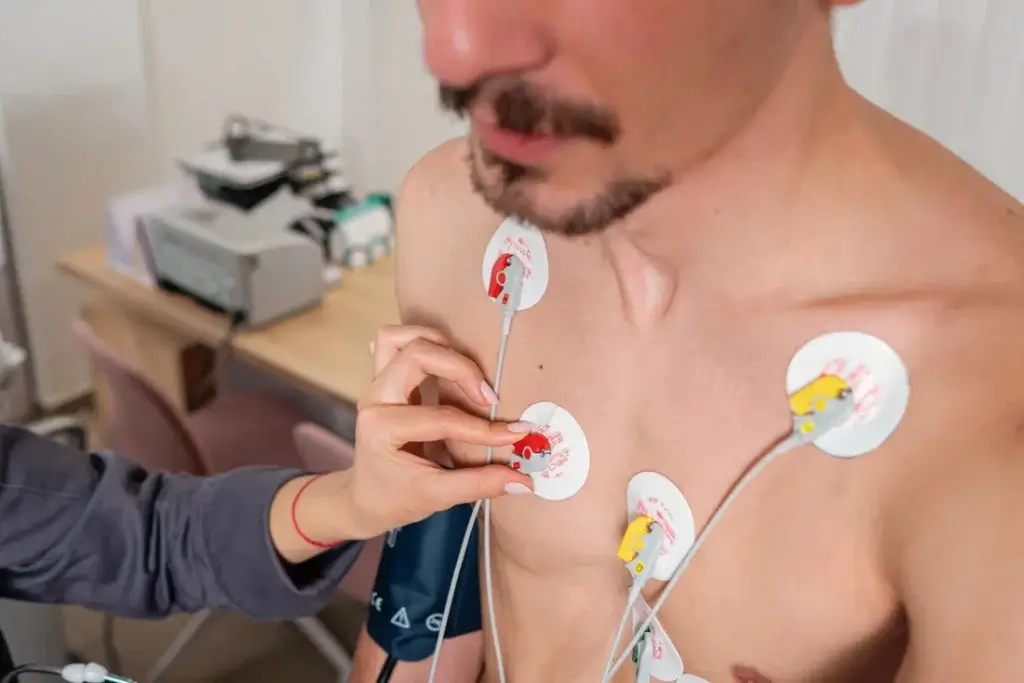A reader recently asked: “Can I get disability for POTS? I have it but don’t see it listed anywhere on the SSA’s website as an eligible condition.” This is a great question! Many different diseases, medical conditions, and injuries can qualify for Social Security disability benefits. That includes conditions you don’t see listed as an “official” disability on the Social Security Administration’s website.
We’ll explain how to apply, qualify, and what to expect during the application and claim review process below.
What is POTS?
POTS (postural orthostatic tachycardia syndrome) is an autonomic nervous system disorder. When someone with POTS sits up or stands after lying down, they may feel dizzy or lightheaded. This is because people with POTS may experience a faster heart rate when they get up. This is a common disorder – approximately 1 to 3 million people in the U.S. have POTS – and it’s not curable.
Typically, when someone sits or stands up after lying down, the body works to pump blood back up to the heart. When someone has POTS, however, that blood flow does not happen as it normally would in others. In someone with POTS, the blood instead stays below your heart, causing both a rapid heartbeat and low blood pressure.
POTS symptoms can intensify in certain situations, such as:
- Strenuous exercise
- A warm climate (whether that’s due to the weather outside or a hot bath or shower)
- Standing up often
- Sickness, whether it’s just a cold or more serious illness
- Menstruation
POTS more often affects women than men, and pregnancy, significant physical trauma, or surgery can increase an individual’s risk.
What POTS Symptoms Might Limit Your Ability to Work?
POTS is a condition that can affect both children and adults. And certain symptoms are far more likely to get you disability for POTS than others.
To get disability for POTS, you must prove its symptoms prevent you from working for at least 12 months. Since it affects each person in a different way, not everyone who has this condition can get disability for POTS.
For example, one person with POTS with cardiac issues might develop heart palpitations. Another person might develop cold or painful hands and feet, which is a vascular issue.

Both of those examples might limit someone’s ability to work. There are other symptoms as well that can impact a person’s ability to hold down a job, such as:
- Lightheadedness and dizziness (which affects 99% of POTS patients)
- Fainting (94%)
- Chest pain (84%)
- Trouble breathing (88%)
- Nausea (90%)
- Trouble concentrating (94%)
- Discoloration in the lower legs
Is POTS a Disability?
When the Social Security Administration (SSA) evaluates disability applications, it follows its own Blue Book criteria for the medical review. The Blue Book includes every condition or disease that the SSA already determined qualifies as a disability. This Blue Book doesn’t include POTS, which means that it doesn’t automatically qualify as a disability under SSA guidelines.
However, you can still get benefits if your condition is as severe as another disability in the SSA’s Blue Book. Approximately 25% of people with POTS cannot work. What’s more, experts say the number of people with POTS doubled after the COVID-19 pandemic. Researchers found that quality of life – a measure that disability hearings often cover – for someone with POTS is comparable to that of someone on dialysis for kidney failure. That’s quite a significant data point that should help at least some applicants get disability for POTS.
Unlike the SSA, the ADA (Americans with Disabilities Act) does not have a master list of disabilities. Rather, it asks three questions:
- Does the disease or condition severely limit one or more major life activities?
- Is there a record of this disease or condition?
- Does the individual in question have this condition or disease?
If you can answer “yes” to one or more of these questions, then you might qualify for an ADA accommodation.
This means any employer must offer reasonable accommodation so a person can continue working in the same job. For instance, an employer might offer more frequent breaks to help with fatigue or remove physical labor from job duties. The accommodation must address your particular POTS symptoms and issues.

How Hard Is it to Get Disability for POTS?
The Social Security Administration has two different programs that pay disability benefits.
The first is Social Security Disability Insurance, or SSDI (though many people refer to it as SSD benefits.) To qualify for SSDI, you must:
- Have a prior work history that meets SSA requirements. This means you worked at least 5 in the last 10 years while paying Social Security payroll taxes.
- Be unable to work for at least 12 months, and specifically because of your health.
- Not be drawing any other Social Security benefits on the date when you file your disability for POTS application.
- Make less than the maximum income limit for the current year. For blind individuals, that amount is now $2,590. For sighted applicants, that amount is $1,550.
The second program is Supplemental Security Income (SSI). Unlike SSDI, you do not need a certain amount of work history to qualify for this benefit. You do, however, need limited income and resources. You must also be blind, disabled, or at least 65 years old.
If you meet SSI income limits and aren’t yet 65, the next step is to confirm your health problems count as a disability.
Since not everyone with POTS has identical symptoms, some people will have an easier time than others. Simply trying to navigate the system drives many people to give up after their first claim’s denial. However, many people denied benefits on their first try may get disability for POTS if an attorney helps them appeal.
Our biggest tip to anyone interested in getting disability for POTS is simple. You are far more likely to get disability for POTS if you have other health issues affecting your daily life. Since doctors may diagnose POTS as either a symptom or complication, we list some other conditions you may have below.

Other Medical Conditions That May Help You Get Disability for POTS
Unfortunately, researchers do not yet know what causes POTS in certain people. But people who have POTS often have other illnesses or conditions that appear in the SSA’s Blue Book. This means that if you have POTS and another of these conditions, you’re potentially more likely to qualify for benefits.
People with POTS often have the following conditions, which do appear in the SSA’s Blue Book of eligible disabilities:
Medical Evidence You’ll Need for Your POTS Disability Claim
We recommend anyone seeking disability benefits keep a symptom journal to submit along with their claim paperwork.
The goal is to create a written record tracking all the symptoms you experience and how they impact you daily. Another important set of records to keep is medical evidence. Not only will you need to provide proof of doctor visits and standard tests, but you’ll also need to provide evidence of tests that are specific to POTS.
Some things you should include with your disability for POTS claim paperwork (if they apply to your claim) are:
- An active standing test and a tilt-table test completed within the past year. Both tests monitor your heart rate while you’re in different physical positions. The SSA will want to review the most recent results.
- A heart rhythm and heart function test to assess your cardiac health.
- Blood draw lab results and brain imaging scans. These help confirm you have no other diseases or conditions that a doctor could accidentally diagnose as POTS.
- QSART (Quantitative sudomotor axon reflex test) results. This is basically a sweat test, which tells doctors when your body’s unusually taxed or otherwise in distress.

How to Apply for POTS Disability Benefits
When considering which program to apply to, you should first make sure that you have enough work credits to qualify for SSDI.
You have 4 ways to file your disability for POTS claim:
- Online at SSA.gov. (You can only choose this option if you apply for SSDI; you cannot file for SSI disability online.)
- Over the phone by calling 1-800-772-1213 Monday through Friday, 8am-7pm EST.
- In person at your local Social Security office.
- For free with expert help from a nearby Social Security attorney. (Hint: This triples your chances for getting benefits paid within 6 months!)
No matter which option you choose, it takes a minimum of 4-5 hours just to fill out all claim forms. That’s assuming you have every document you need handy when you file and don’t need to ask any questions.
How to Triple Your Chances of Getting Disability for POTS
It’s beneficial to have someone on your side who knows the ins and outs of both federal disability programs. In fact, having a lawyer file your application makes you 3x more likely to get SSD benefits right away.
Those who file on their own without legal assistance usually wait up to two years for their first payment. Every disability lawyer we can match you with offers free claim reviews that can tell you whether you’ll qualify.
Ready to see if you may qualify? Click the button below to start your free online benefits evaluation now:
Get Your Free Benefits Evaluation
Lisa Allen is a writer and editor who lives in suburban Kansas City. She holds MFAs in Creative Nonfiction and Poetry, both from the Solstice Low-Residency Program in Creative Writing at Pine Manor College. Prior to becoming a writer, Lisa worked as a paralegal, where she specialized in real estate in and around Chicago.

